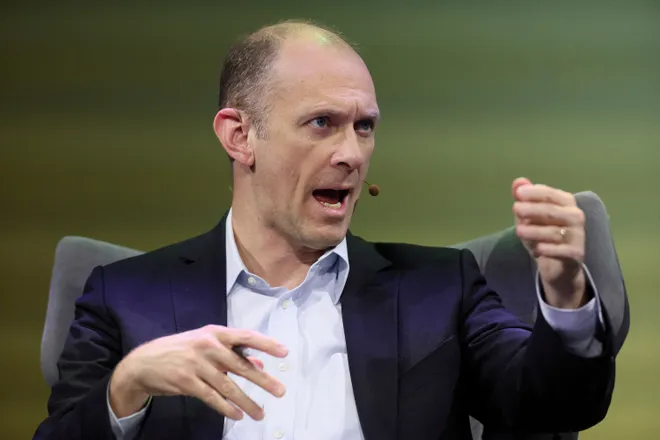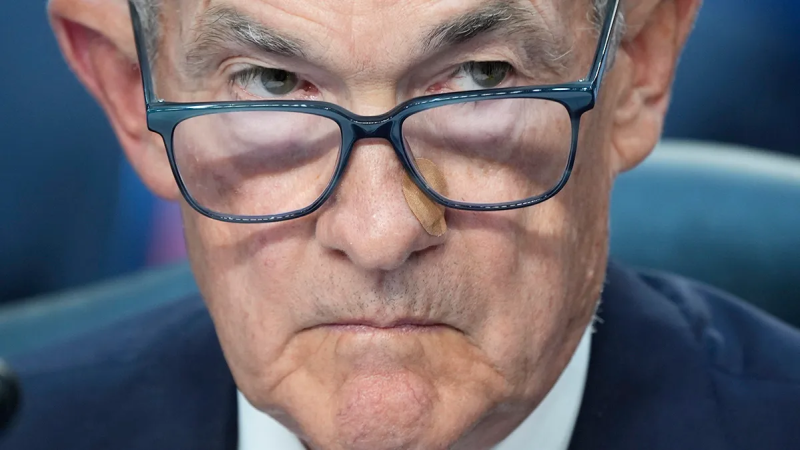Chicago Fed president sees rates falling at "gradual pace" despite hot jobs, inflation
Stronger-than-expected September labor market data and inflation numbers that were higher than what was forecast aren’t likely to deter the Federal Reserve from continuing to lower interest rates, said Chicago Federal Reserve President Austan Goolsbee.
Confident inflation was firmly falling towards its 2% goal, the Fed pivoted last month to focus on keeping the labor market afloat. Amid signs of a cooling jobs market, it lowered its short-term benchmark fed funds rate last month for the first time in four years by a half-percentage point, or 50 basis points, to a range of 4.75% to 5%.
But last week’s surprisingly strong labor report showing 254,000 new jobs were created in September and then, this morning’s slightly higher-than-expected 2.4% annual increase in inflation, pared back rate expectations. Some economists, like former U.S. Treasury Secretary Lawrence Summers, even suggested the Fed’s half-point cut last month was a mistake.
Goolsbee said in an interview with USA TODAY, however, that one month of numbers doesn’t determine Fed policy.
“I believe it's critical to rise above monthly numbers, and remember, there's margin of error on every single one,” he said. “The long arc shows pretty clearly, in my view, inflation is way down, and unemployment and other measures of the job market have cooled and moved to a level that’s basically consistent with what we think of as steady-state full employment.”
Capitalize on high interest rates: Best current CD rates
Trims instead of slashes:Blowout September jobs data points to solid economy and slower Fed rate cuts, analysts say

Where does the Fed go from here on rates?
“In my view, if you look at the long arc of conditions, they suggest that over a longish period and at a gradual pace rates are going to come down a fair amount.” Goolsbee said.
The size of each cut, determined meeting to meeting, is less important than seeing “inflation is way down” from the 9.1% peak in June 2022, he said, and “we're now thinking about both sides of the mandate, not just getting inflation down. We’ve got to think about the job market side as well as the inflation side. And most likely that's going to mean a series of cuts.”
But decisions will continue to depend on data, he said.
“Everything (no cut, 25 basis point cut or 50 basis point cut) is always on the table,” Goolsbee said. “And what will determine the magnitude is, how confident are we about the path of inflation back to 2% and that the job market is stabilizing at something like full employment, not either deteriorating or overheating.”

What else does the Fed watch?
While the Fed focuses on data to determine its interest rate policy, Goolsbee said the Fed also looks at possibly lengthy economic shocks like a Middle East war that could spike oil prices or a dockworkers strike that could snarl supply chains and make the Fed “recalibrate.”
Tens of thousands of port workers along the East and Gulf coasts went on strike on Oct. 1 but temporarily returned to work on Oct. 4 after tentatively agreeing to a reported 62% wage increase over six years. The workers have until Jan. 15 to negotiate other terms of the deal.
“Anybody who cares about the economy should be keeping their eye on a supply shock, external events,” he said.
The Fed might be able to look past a short, temporary supply shock, but “it's still not going to be a pleasant condition,” he said.
Medora Lee is a money, markets, and personal finance reporter at USA TODAY. You can reach her at mjlee@usatoday.com and subscribe to our free Daily Money newsletter for personal finance tips and business news every Monday through Friday morning.
Disclaimer: The copyright of this article belongs to the original author. Reposting this article is solely for the purpose of information dissemination and does not constitute any investment advice. If there is any infringement, please contact us immediately. We will make corrections or deletions as necessary. Thank you.







